With online grocery services providing ever-faster options for shoppers, C-Store asks whether the likes of Amazon Fresh will deliver a body blow to convenience retailers’ trade
Life has a habit of being quite full-on these days, with the big weekly food shop often a casualty of shoppers’ lack of time. Just 40% of people carried out a weekly shop last year, according to HIM Research & Consulting. Instead, consumers are opting for a top-up approach to shopping, leaving convenience stores to benefit.
But with Amazon offering super-speedy deliveries via Amazon Fresh and Prime Now, and supermarkets upping their game in online delivery, could the trade that convenience retailers have been profiting from now be under threat?
“It certainly is a new challenge for us and something else that independent retailers will have to compete with,” concedes Siva Theivanayagam, who owns four Nisa stores in the Peterborough area.
Mintel has revealed that almost half (48%) of British consumers are shopping online, with 11% doing all their grocery shopping online, and a further 12% doing most of their grocery shopping online. The report, Online Grocery Retailing UK 2016, also states that online grocery sales are forecast to reach £9.8bn in 2016, up 13% from an estimated £8.6bn in 2015.
HIM found that 58% of online shoppers did so in order to save time, while 40% did so to stock up on heavy and bulky items. According to HIM, 13.5 million adults are using the internet to buy groceries in a typical week, with Amazon Prime Now and Amazon Fresh, in particular, gaining reputation.
When asked, 31% of adults aged 25-34 and 34% of adults aged 55-64 were aware of the Prime Now service, with 65% of adults aged 18-34 confirming that they were likely to trial the Amazon Prime Now and Amazon Fresh services.
New kid on the block Amazon Fresh claims to offer more than 130,000 fresh, frozen and prepared foods from a number of leading UK manufacturers. Customers must become an Amazon Prime user to redeem the service, costing £7.99 per month, or a one-off £79 fee.
Amazon Prime members shopping on Amazon Fresh can choose between a two-hour delivery window between 8am and midnight with free delivery on orders over £40, or a £3.99 delivery charge for orders shy of that.
Amazon first trialled fresh food deliveries to a limited number of postcodes last year, before launching Amazon Fresh in 69 Central and East London postcodes in early June, and a further 59 later that month. In September, the firm grew the number of Greater London postcodes it services to 190.
The game changer, though, is the Amazon Prime Now service. This provides customers with fast delivery on a smaller range of food essentials, household items and home entertainment products. Minimum basket spend is £20, with one-hour deliveries available to select addresses, with a set £6.99 charge for an almost instant delivery, or free on orders placed for a two-hour time slot.
Prime Now first rolled out to limited London postcodes, but in April Amazon extended the service to Surrey, and in June rolled out to postcodes in Birmingham, Newcastle, Manchester and Liverpool.
When it comes to one-hour deliveries, however, Amazon isn’t the only player. Sainsbury’s is trialling a one-hour grocery delivery service in Wandsworth, London. The service is available via an iPhone app called ‘Chop Chop’ and allows customers who live within three miles of Sainsbury’s Wandsworth store to get up to 20 goods delivered within one hour. The supermarket group has also opened a purpose-built 85,000sq ft centre in Bromley-by-Bow to cope with demand for its online grocery orders.
According to IGD, this investment could pay off, as online sales are on a rapid curve in growth and the channel is expected to double in value by 2020 to £17.2bn, meaning that competition for market share in grocery delivery is getting fierce.
Marks & Spencer is offering a one-hour delivery, executed by the online delivery company Togle and currently available only in West and South West London. Central postcodes are to be added this year.
Deliveroo, the courier that delivers restaurant food by bike, announced in July that it has partnered with Majestic Wines and BrewDog so that consumers can order beer, wines and spirits to their door as the courier delves into off-licence territory.
Saquib Ghafoor, who owns Bargain Booze and Nisa stores in Tyne & Wear, admits that one-hour deliveries are undoubtedly appealing to shoppers. “Where they stand up is their time-saving capability, as busy workers can order on their phone, tablet or such on the way home and get their delivery straight away,” he says. “Naturally, it is a formula that will work for some shoppers. I believe these delivery services are really out to appeal to more premium customers, who want high-end food and need it instantly.”
However, there are elements that let online delivery down. Saquib says: “I think these services can sometimes fall short because of their set basket spends.”
His view is supported by research from Mintel showing that one-quarter of consumers are put off online grocery shopping because of high delivery charges (26%).
Saquib believes c-stores have the edge in other areas, too. “One of the key shopping habits is cash-conscious customers, and c-stores can offer competitive prices at a walking distance from homes and communities, so this is still going to be something that drives a lot of business.”
Another turn off for consumers can be the complexity involved in online ordering. Says Siva: “I don’t think sites are always user friendly and you can often spend a lot of time browsing products by clicking through to different pages. C-stores can offer customers an easy way to shop without clicking through page after page online.”
Siva is confident that online delivery can’t compete with the in-store experience he can offer his shoppers. “Customers want to enjoy their shopping experience a bit more and take that extra bit of time to look at what we have, examine our prices and the freshness of our products, and they come back time and again for our high level of customer service.”
Product freshness is certainly an area where convenience stores could have the upper hand. Mintel identified that 38% of online shoppers stopped shopping for groceries online because of the lack of control when choosing fresh products.
Harry Goraya, owner of Rosherville Post Office in Gravesend, Kent, is confident that convenience stores have a healthy future. “I do believe there is a market for this kind of instant or fast delivery service,” he says, “but while some customers in a particular demographic may opt to trial this service and small stores in those areas may struggle, I don’t think it is going to have a devastating effect on the sector. It is down to us to enhance our point of difference and stand out in the crowd.”
My Amazon Fresh and Amazon Prime experience
C-Store reporter Simon Banks trials the Amazon Fresh and Prime Now service
Amazon Prime
To use the service I downloaded the app straight to my iPhone and was surprised by the range available, given the service is designed to offer just the essentials. Fresh meat and poultry aren’t available, though.
However, on checkout I was prompted that three of my items were not available. All were fresh: lettuce, bananas and tomatoes.
While the one-hour delivery service was not yet available to my address, a free same-day two-hour delivery was, and my goods (£20 spend) arrived within just 49 minutes of placing my order. I was even able to track the order real-time on a map.
Items were fresh and my only complaint was one squashed loaf of bread. Notably, most of the items were Morrisons branded.
Amazon Fresh
Here the range was much wider, including a good choice of Free From items. This time my £15 spend was combined with a delivery charge of £3.99. I picked a two-hour time slot for later that day and it arrived within the first hour.
Chilled and frozen products came packaged in a chilled box and were in a good condition.
Innovation
A new form of trolley dash
Amazon hopes to tackle the complexity of online shopping with Amazon Dash, an ‘ultra-fast’ way for shoppers to assemble and pay for grocery orders.
Amazon Dash is a gadget that enables customers to scan a product barcode or simply say the name of a product, adding it automatically to their online basket.
Brand-specific Amazon Dash buttons are also available for particular products, such as Andrex toilet tissue and Finish dishwasher tablets. Managed by the Amazon app on consumers’ smartphones, the wi-fi-connected devices can be placed next to consumers’ supply of the products and when they run low, a touch of the button will add the product to their next online order.
Brewer Molson Coors has also got in on the act with a Carling button, which syncs with a smartphone app, enabling users to add beer to online shopping orders from Tesco, Asda, Morrisons or Sainsbury’s.





















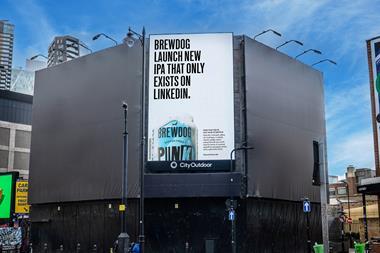
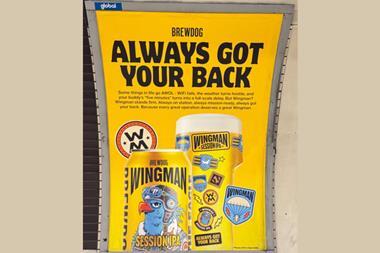
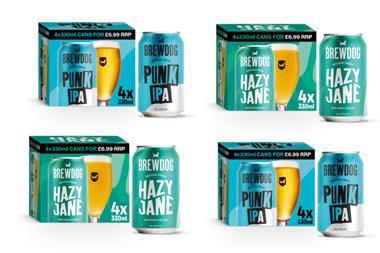

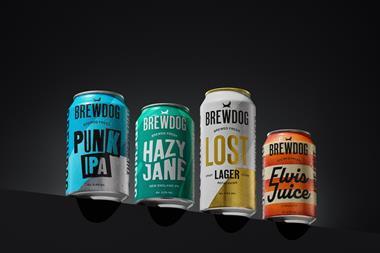




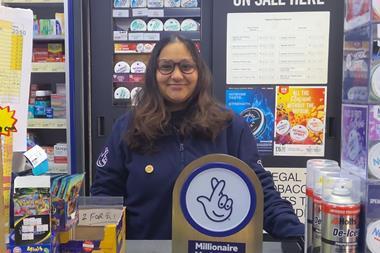

No comments yet